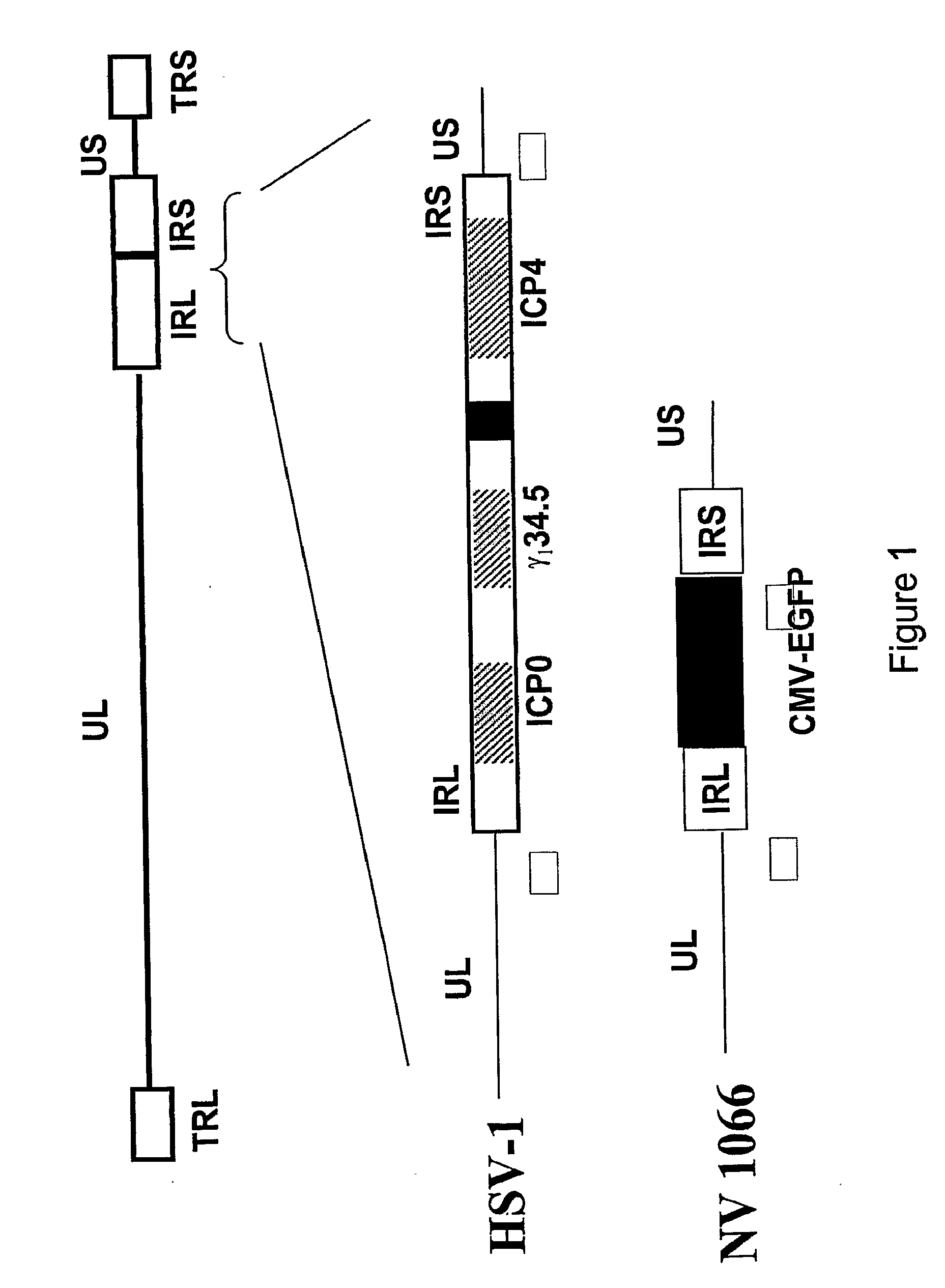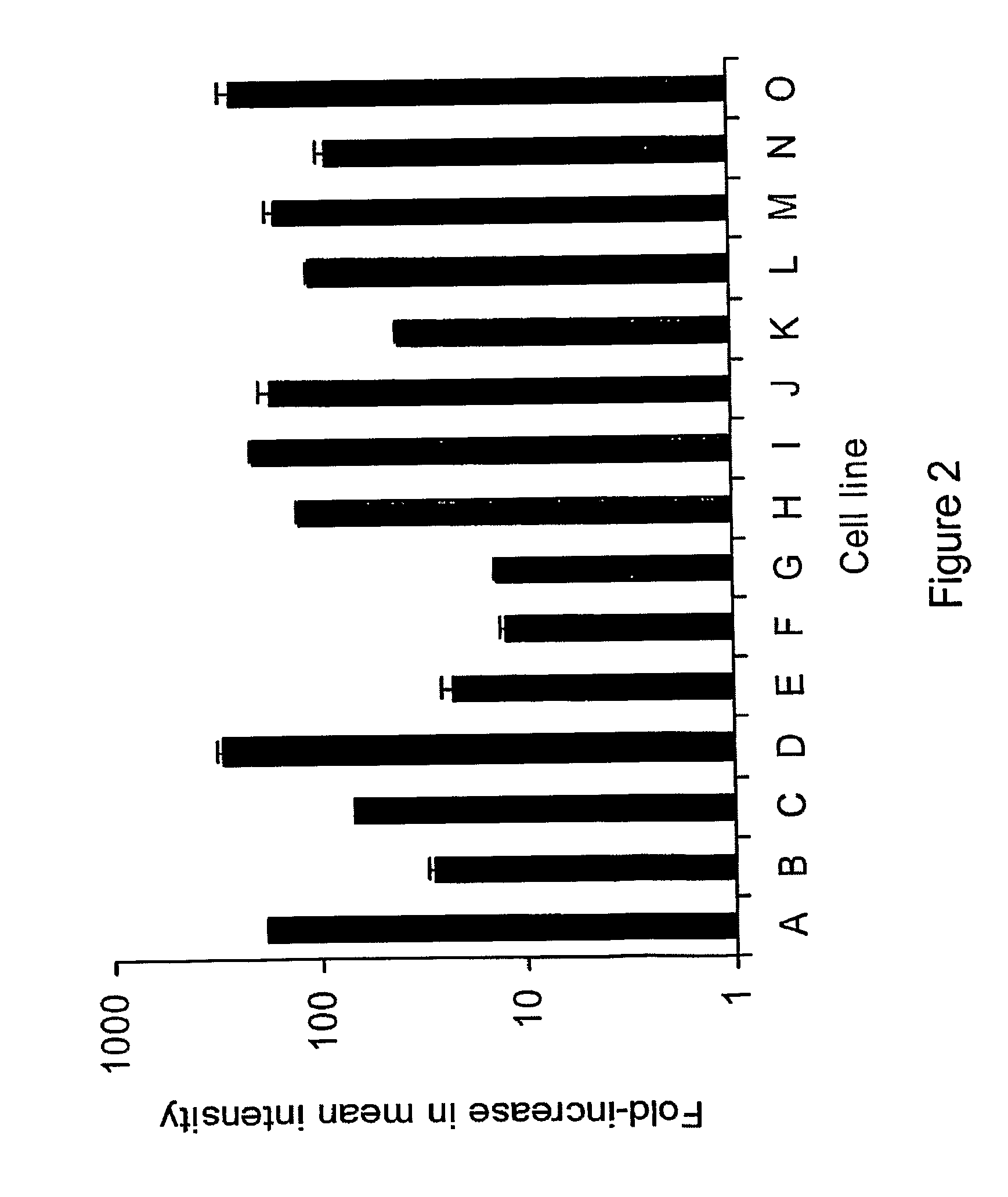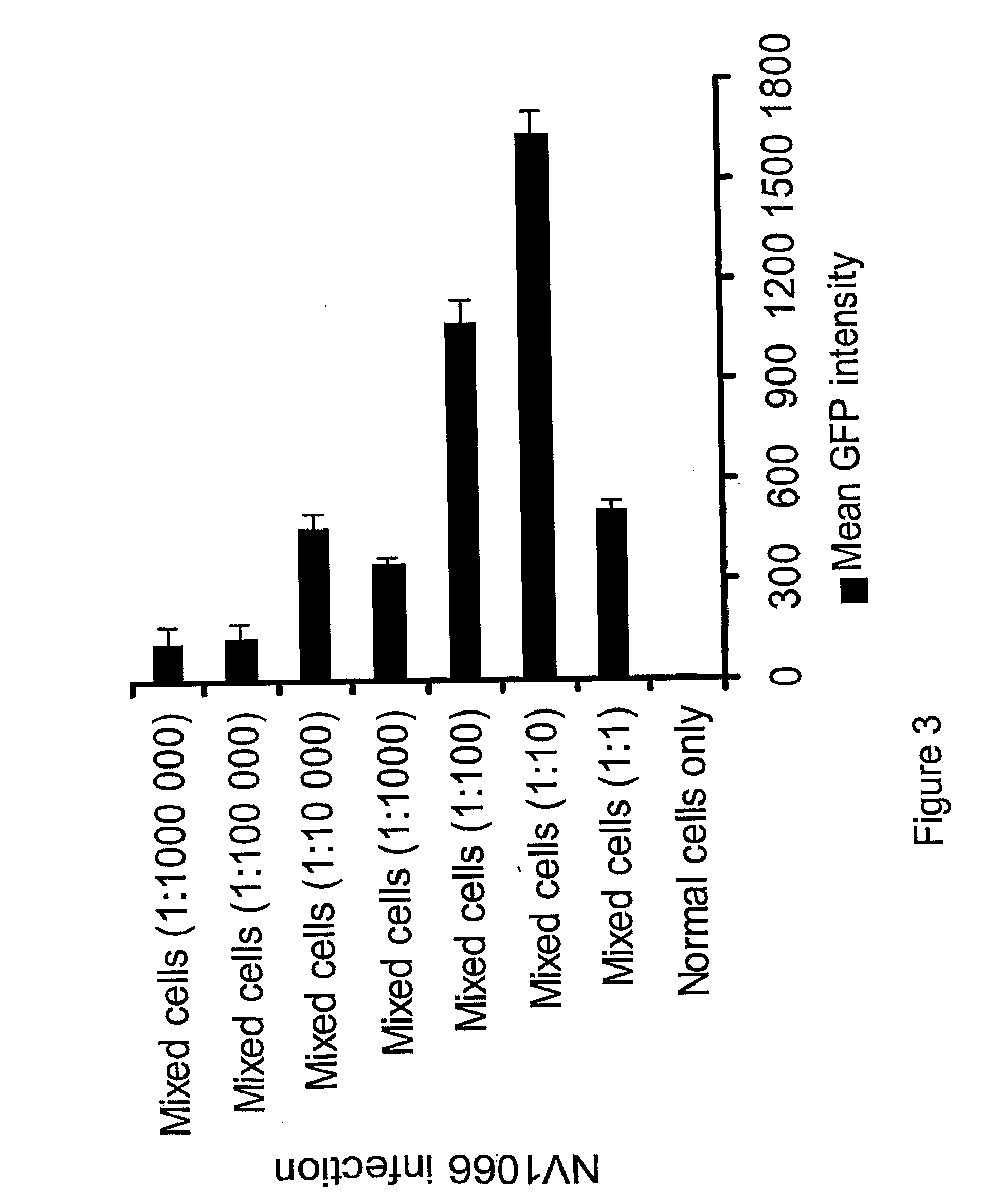Method for Detection of Cancer Cells Using Virus
- Summary
- Abstract
- Description
- Claims
- Application Information
AI Technical Summary
Benefits of technology
Problems solved by technology
Method used
Image
Examples
example 1
Materials And Methods
I. Construction of Viruses for Use in the Present Inventions:
[0184]A. Construction of a Heroes Simplex Virus for Use in the Present Inventions for Example, NV1066, is Briefly Described Below.
[0185]NV1066 refers to an attenuated oncolytic herpes virus that expresses enhanced green fluorescent protein (eGFP). See, FIG. 1. Specifically, an engineered herpes virus was constructed when a transgene encoding eGFP, under a constitutive CMV promoter, was inserted into the internal repeat sequence of the parent virus, resulting in deletions in one copy each of the viral genes encoding ICP-4, ICP-0, and γ134.5. These deletions rendered the virus selective for infection and replication in tumor cells while attenuating its' potential neurovirulence.
[0186]More specifically, NV1066 was constructed by transfecting a BAC mid (BAC 17-28), a cosmid (cos12a), and a plasmid (pUL56-GFP-US1) containing overlapping and contiguous HSV-1 sequences into Vero cells with LipofectAMINE accor...
example 2
Herpes Simplex Viral Mutant, NV1066, Infects a Range of Cancer Cell Lines in Vitro
[0204]NV1066 infectivity was tested in numerous cancer cell lines as described in Table 8 below. One hundred and eleven cancer cell lines were infected in vitro at an MOI of 0.01, 0.1 and 1.0. The cell lines listed became infected and expressed eGFP that was detected upon examination under fluorescent microscopy and by flow cytometry.
[0205]The inventors observed that in vitro, NV1066 infected the cell lines listed in Table 8 at MOIs of 0.01, 0.1 and 1.0. Specifically, NV1066 infected cancer cells expressed eGFP within 1 to 2 hours of incubation. After 18 hours incubation, the majority of cancer cells were infected and expressed eGFP. Although the virus was able to infect and express eGFP at a lower MOI of 0.1, at a higher MOI of 1.0, the majority of cancer cells in the sample were infected at an earlier time point and expressed strong eGFP fluorescence. The expressed eGFP was intracellular such that th...
example 3
Mean Intensity of NV1066 Infected Cancer Cells is 11-344-Fold Higher Than Background Autofluorescence
[0207]In order to determine the level of eGFP expression over background cellular autofluoreseence, fifteen representative human cancer cell lines (A-O, described below) were infected in vitro at an MOI of 1.0 (multiplicity of infection, ratio of viral particles per cancer cell), incubated for 18 hours, and analyzed by flow cytometry. Compared to background autofluorescence, infected eGFP expressing cancer cells showed higher mean intensity of green fluorescence (11-344-fold higher, represented in logarithmic scale).
[0208]Because of this strong expression of eGFP, cancer cells in body fluids can be easily identified, even in a background of millions of cells or in cell clumps. See, FIG. 2. (A-O cancer cells: lung—A549, H1299; bladder—UMUC-3, KU19-19; stomach—OCUM-2MD3; colorectal —HT29; hepatoma—HepG2; mesothelioma—MSTO-211H, JMN, H-Meso, H-28; breast MCF-7; head and neck —SCCVII, SC...
PUM
| Property | Measurement | Unit |
|---|---|---|
| Time | aaaaa | aaaaa |
| Time | aaaaa | aaaaa |
| Time | aaaaa | aaaaa |
Abstract
Description
Claims
Application Information
 Login to View More
Login to View More - R&D
- Intellectual Property
- Life Sciences
- Materials
- Tech Scout
- Unparalleled Data Quality
- Higher Quality Content
- 60% Fewer Hallucinations
Browse by: Latest US Patents, China's latest patents, Technical Efficacy Thesaurus, Application Domain, Technology Topic, Popular Technical Reports.
© 2025 PatSnap. All rights reserved.Legal|Privacy policy|Modern Slavery Act Transparency Statement|Sitemap|About US| Contact US: help@patsnap.com



